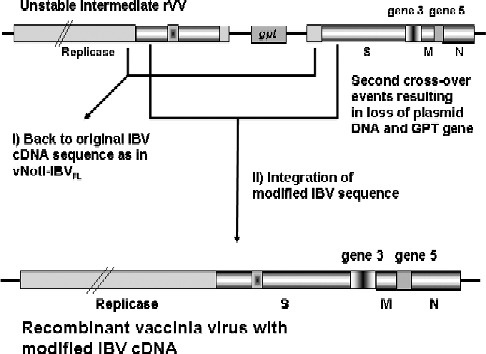Fig. 3.

Schematic diagram demonstrating the second step of the TDS method. Integration of the complete pGPTNEB193 plasmid into the vaccinia virus genome results in an unstable intermediate because of the presence of tandem repeat sequences, in this example the 3′-end of the replicase gene, the S gene, and the 5′-end of gene 3. The second single-step recombination event is induced in the absence of MPA; loss of selection allows the unstable intermediate to lose one of the tandem repeat sequences including the Ecogpt gene. The second step recombination event can result in either: (I) the original sequence of the input vaccinia virus IBV cDNA sequence, in this case shown as a recombination event between the two copies of the 3′-end of the replicase gene, which results in loss of the modified S gene sequence along with Ecogpt gene; or (II) retention of the modified S gene sequence and loss of the original S gene sequence and Ecogpt gene as a result of a potential recombination event between the two copies of the 5′-end of the S gene sequence. This event results in a modified S gene sequence within the IBV cDNA in a recombinant vaccinia virus.
